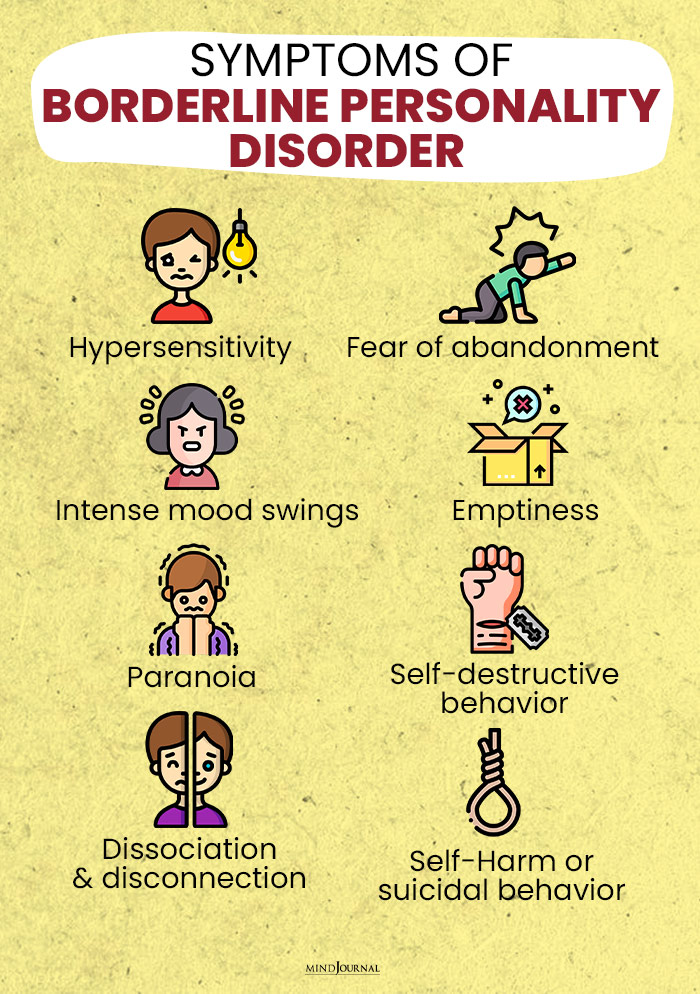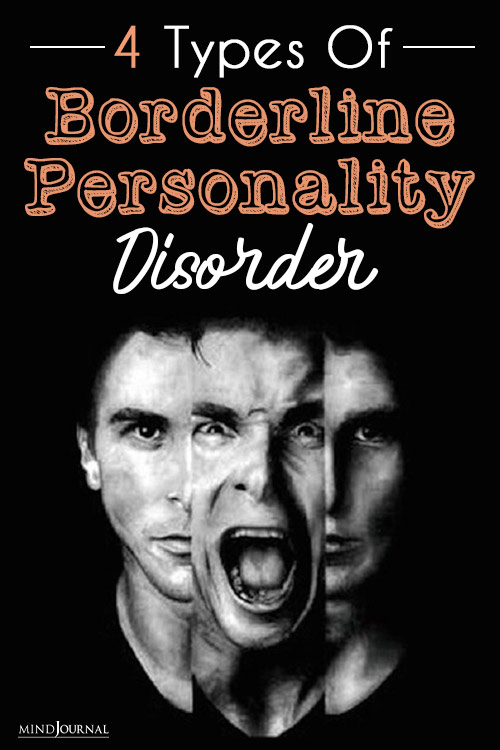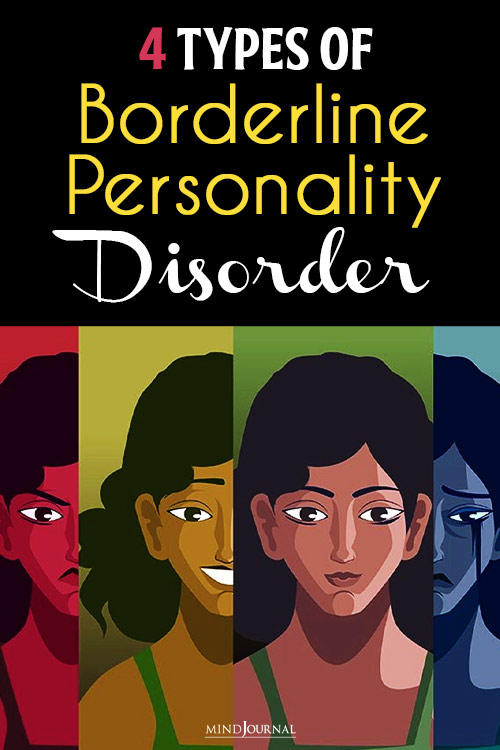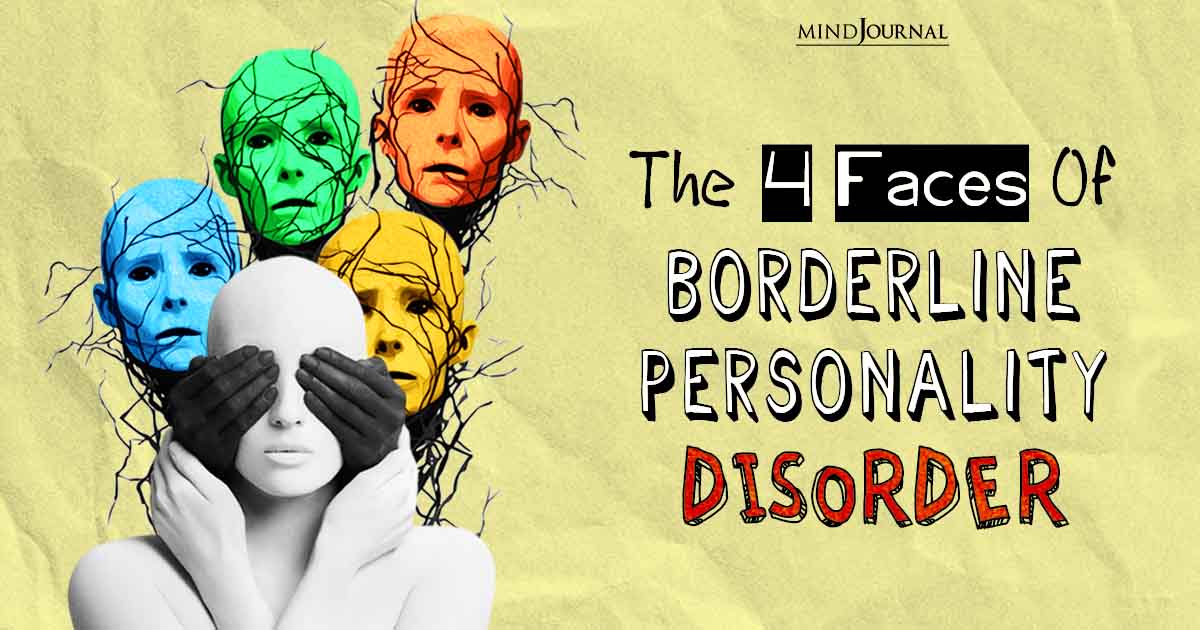From intense emotions to unstable relationships, explore the 4 types of borderline personality disorder, each with its unique characteristics and challenges.
In the last article, we’ve discussed what is Borderline Personality Disorder (BPD), its symptoms, causes, risk factors, and treatment. In this post, the focus is on 4 types of borderline personality disorder.
People with BPD face difficulties regulating emotions, they experience severe mood swings and a great sense of insecurity and instability. They view things as all good or all bad. They change their opinions about others very quickly, thus they have unstable relationships with others.
When it comes to diagnosis, mental health professionals use the Diagnostic and Statistical Manual of Mental Disorders (DSM), 5th Edition. According to this DSM manual, the symptoms of Borderline Personality Disorder are given in this post. Research says that BPD is the result of a combination of environmental factors, hereditary factors, and brain function.

There are four types of borderline personality disorder each with its own symptoms. If you have BPD symptoms you can be diagnosed with more than one type at the same time or at different times. Understanding these BPD subtypes will help you better understand the mental disorder (if you are diagnosed with BPD).
4 Types of Borderline Personality Disorder
1. Petulant Borderline Personality Disorder
People with this borderline personality disorder are unpredictable (can be extremely sad or angry), irritable, impatient, and defiant. They are pessimistic, stubborn, and resentful.
A petulant borderline suffers from extreme feelings of unworthiness and fear of being disappointed by others. Yet, they can’t resist relying on them. The feeling of not being loved leads to relationship challenges, extreme dissatisfaction and creates an unhealthy desire for control in them.
This makes them passive-aggressive and triggers episodes of anger. They engage in self-harming behavior to get people’s attention followed by manipulation, substance abuse, and other damaging behaviors.
Existing literature about these BPD subtypes shows inconsistencies. Some studies show BPD subtypes only in girls, characterized by angry externalizing, high-functioning internalizing, histrionic, and depressive internalizing.
Also read 20 Characteristics Of A Con Man Sociopath
2. Self-Destructive Borderline Personality Disorder
People with self-destructive borderline personality disorder struggle intensely with bitterness, self-criticism, and self-hatred. They engage in activities that are self-destructive but they may or may not be aware of it. They may try to harm themselves just to feel something.
Examples of self-destructive behavior:
- Self-harm behavior like burning, cutting, hitting or scratching
- Risky activities that give adrenaline rush, especially if you’re unprepared
- Substance abuse including prescription medication abuse and recreational substances like alcohol
- Threats of suicide – it’s more than just a symptom and require emergency services
A self-destructive borderline has no sense of self and struggles with the fear of being abandoned. Besides self-harm, they also exhibit a sudden increase in their energy levels, feelings of euphoria, and poor quality of sleep or sleeplessness. Euphoric feelings may be a sign of a manic episode or bipolar disorder instead of a self-destructive borderline personality disorder.
Also read The 4 Types of Narcissism Share A Core Trait
3. Discouraged or Quiet Borderline Personality Disorder
A person with a discouraged BPD has fears of abandonment, which is why they act needy or exhibit clingy and codependent behavior. They take extreme actions to prevent perceived or real abandonment.
They try to fit into a group setting although seeming dejected or alienated and detached. On one hand, they seek approval, but they also self-isolate. They feel unworthy and tend to blame themselves rather than point out others’ mistakes. So, they are prone to depression.
Inside they are full of anger and disappointment directed at those around them. They don’t feel like having a strong, reliable bond with people in their surroundings. Therefore, they feel lonely and empty most of the time. They experience emotional mood swings when abandonment issues are triggered.
Discouraged BPD is also known as a quiet borderline personality disorder. People with this disorder are more likely to direct their emotions inward as compared to those with other types of borderline personality disorder. They are highly likely to engage in self-mutilating or suicidal behaviors. Research also says that discouraged BPD can be perfectionists, high functioning, and extremely successful.
4. Impulsive Borderline Personality Disorder
People with impulsive BPD can be energetic, charismatic, and motivating as well as flirtatious, elusive and superficial. They are impulsive and tend to seek thrills and become quickly bored.
In their efforts to thrive on excitement and attention they act first and think later. Hence, they often fall into trouble! They are highly likely to engage in self-injurious behavior and substance abuse without any regard for potential consequences. An impulsive borderline seeks validation from people around them and tries hard to avoid abandonment and disappointment.
Examples of impulsive behaviors:
- Aggressive behaviors – breaking things, yelling fits, outbursts, physical fights, hitting things
- Bingeing behaviors – Spending money, excessive eating
- Self-destructive behaviors – drinking excess alcohol, consuming illicit drugs, , sex with multiple partners, unprotected sex (including unprotected oral sex) and gambling
If you could relate to the symptoms of different BPD types, talk to your doctor for the right treatment. In case you are unable to resist self-harming thoughts contact the National Suicide Prevention Lifeline (Lifeline) at 1-800-273-TALK (8255), or text the Crisis Text Line (text HELLO to 741741). that is available 24/7.
You can access confidential support and help to connect with local crisis centers. If you notice your loved one showing above BPD symptoms along with suicide threats, you are requested to intervene and help your loved one access emergency services.
Also read Bipolar Disorder: 10 Facts You Should Know About It
The Bottom Line
The four types of borderline personality disorder include petulant, self-destructive, discouraged, and impulsive. The symptoms and aspects of each type are different, but the hallmark of BPD is the fear of rejection and abandonment. No two individuals experience BPD the same way and the same person may not always experience BPD the same way. Irrespective of the BPD type you are, you will experience a sickly amount of emotional pain.
Please consult your doctor immediately, if you relate to the above symptoms.
Frequently Asked Questions
1. When was borderline personality disorder discovered?
The characteristics of borderline personality disorder that people know today were initially described by Gunderson and Kolb in 1978 and have since been incorporated into contemporary psychiatric classifications. Borderline personality disorder officially entered the DSM classification system by 1980.
2. Who can diagnose borderline personality disorder?
A doctor or a mental health professional can diagnose BPD based on a: Detailed interview, medical history and exam, a psychological evaluation that may include completing questionnaires and discussion of your signs and symptoms
3. How to communicate with someone with a borderline personality disorder?
You can help a person with BPD by closely observing their condition and trying to understand their state of mind and what they are going through. When communicating with them, be patient and empathetic and don’t hesitate to intervene and take help of their support system or access emergency services when you notice suicidal behavior.
4. What triggers a person with borderline personality disorder?
Some of the common BPD triggers are – Rejection of any kind, perceived/real abandonment, loss of a job, end of a relationship, and reminders of traumatic events, and places that invoke negative memories.
5. How do you thrive with a borderline personality disorder?
With the timely diagnosis of borderline therapy disorder as well as proper medication and therapy, you can thrive with BPD.
References: Lieb, K., Zanarini, M.C., Schmahl, C., Linehan, M.M. and Bohus, M., 2004. Borderline personality disorder. The Lancet, 364(9432), pp.453-461. Gunderson, J.G., 2011. Borderline personality disorder. New England Journal of Medicine, 364(21), pp.2037-2042. Anderson, J.S. and Crump, D., 2004. Borderline personality disorder: A view from the trenches, with special attention to its impact on family transition. Journal of Family Studies, 10(2), pp.254-272. Sansone, R.A., Wiederman, M.W. and Sansone, L.A., 1998. The self‐harm inventory (SHI): Development of a scale for identifying self‐destructive behaviors and borderline personality disorder. Journal of clinical psychology, 54(7), pp.973-983. Fusté Escolano, A. and Ruiz Rodríguez, J., 2018. Clinical features of the" Discouraged" Borderline Personality Subtype. In Pòster presentat a: th International Congress on Borderline Personality Disorder and Allied Disorders. 27-29 September 2018. Sitges/Barcelona. Links, P.S., Heslegrave, R. and Reekum, R.V., 1999. Impulsivity: core aspect of borderline personality disorder. Journal of personality disorders, 13(1), pp.1-9.












Leave a Reply